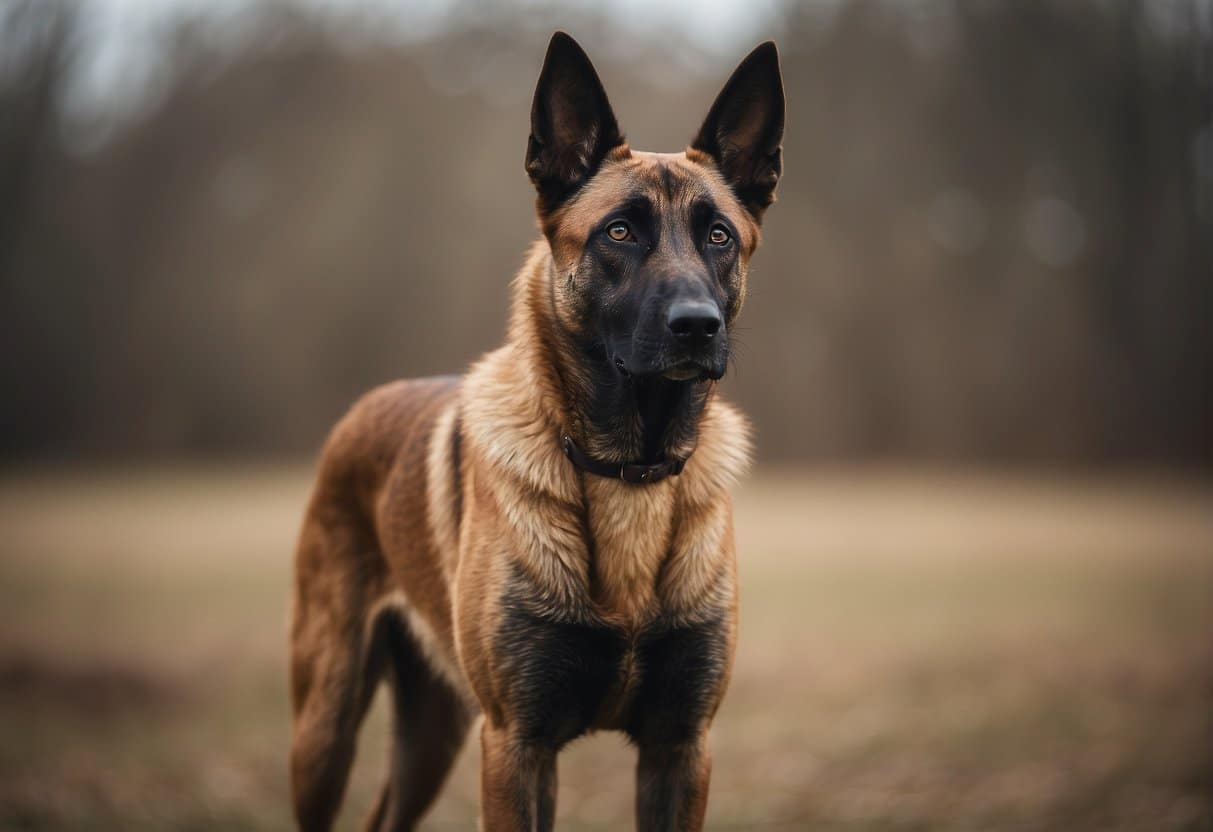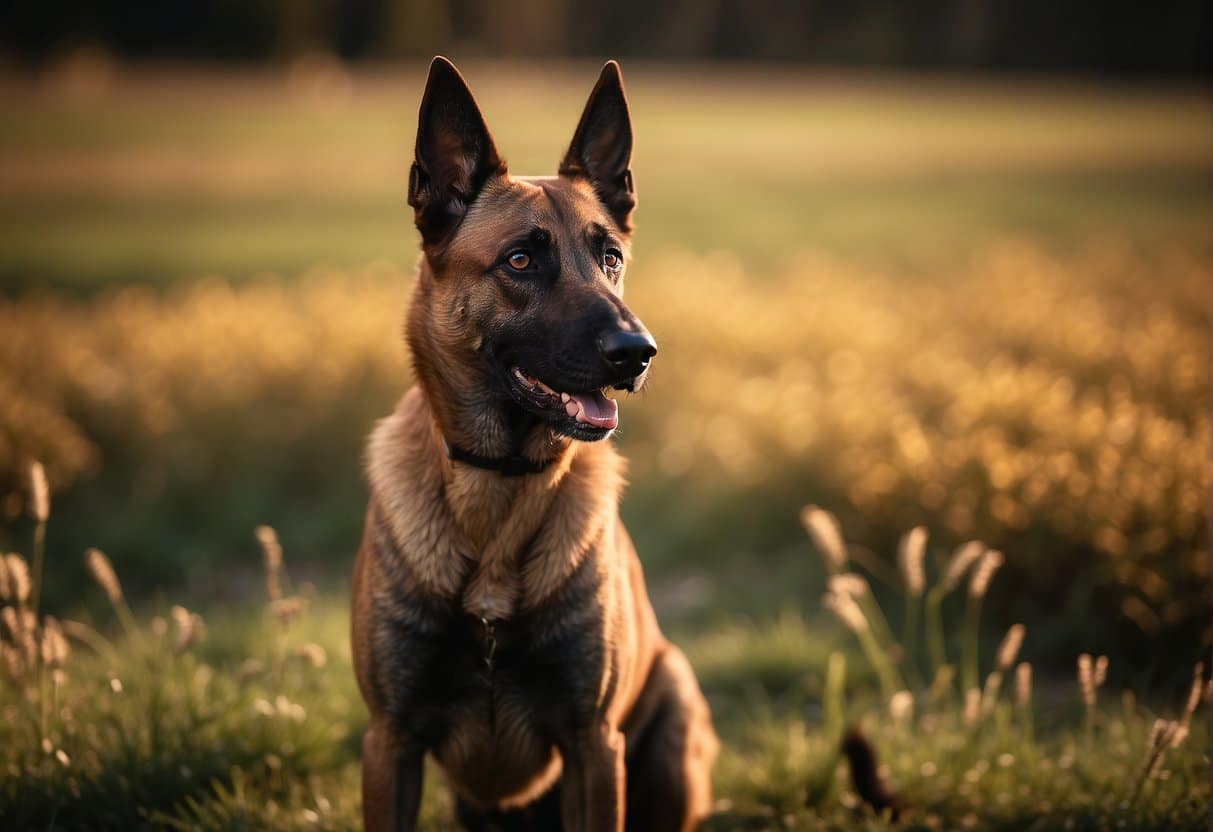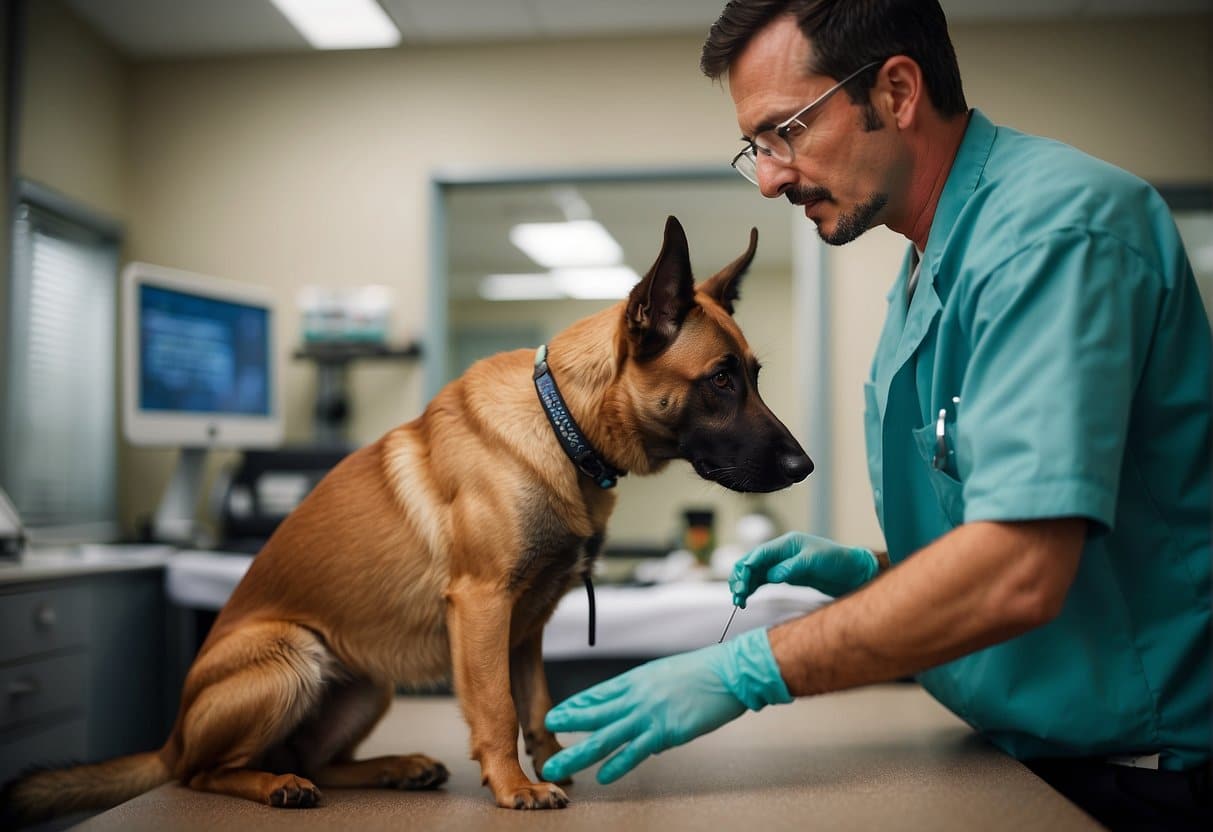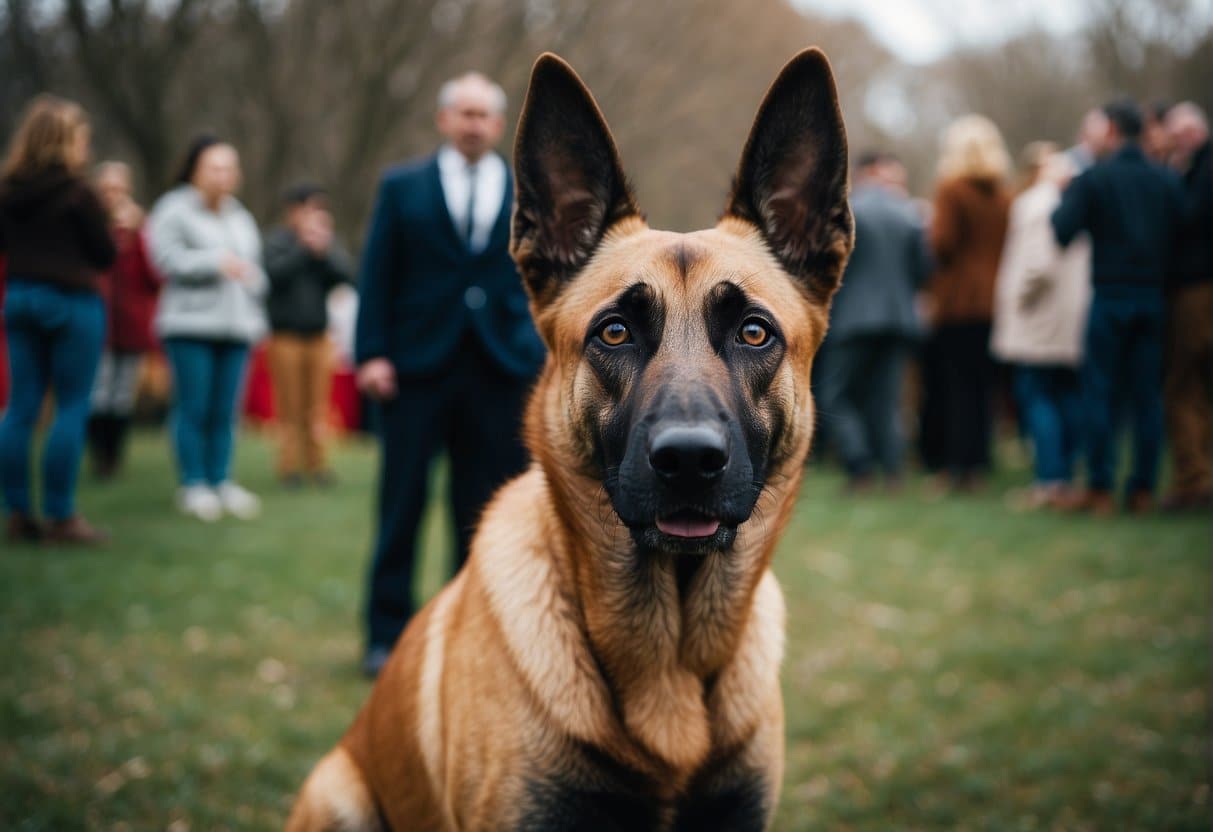
The Belgian Malinois is a breed of exceptional agility and endurance, often outshining other breeds with its ability to master numerous tasks. Hailing from Belgium, these dogs have a rich history as working dogs, primarily bred for herding. Over time, their roles have diversified to include police work, search and rescue, and even participating alongside military personnel due to their unwavering loyalty and keen intelligence. Their compact size and elegant appearance are characteristic of the Belgian Shepherd family, to which they belong.
Physical traits such as a strong, muscular frame, and a short, fawn-colored coat define the Belgian Malinois. This agile sheepdog is often mistaken for the German Shepherd due to some physical similarities but stands apart with its unique attributes and spirited temperament. When it comes to their personality, Malinois dogs possess a vibrant energy matched with a sharp mind, making them well-suited for active families or individuals who can provide them with the mental and physical stimulation they thrive on.
Key Takeaways
- The Belgian Malinois excels in various tasks due to its high intelligence and agility.
- These dogs require consistent training, exercise, and mental engagement to stay healthy and content.
- Proper health and care are crucial for the Malinois, ensuring a fulfilling life alongside their human counterparts.
Breed History and Origin
The Belgian Malinois is a breed with a rich historical tapestry, originally developed as a herding dog. Its journey from a versatile farmhand to a distinguished working dog reflects both its adaptability and the nuanced variations within the Belgian Shepherd breeds.
Historical Development
The Belgian Malinois is one of four varieties of the Belgian Shepherd. Historically, you can trace its roots back to the late 19th century in Belgium, where it was bred primarily for herding sheep. Local Belgian herding dogs were refined by trainers and breeders, with a focus on creating a versatile and robust shepherd dog. The Malinois was named after the Malines region in Belgium, where its refinement primarily took place.
During that period, the Malinois gained recognition for its work ethic and intelligence. It was not long before the breed showcased its abilities beyond herding, finding roles in protection, police work, and even as a service dog.
Belgian Malinois vs. Other Belgian Shepherds
The Malinois is notably distinct from its Belgian Shepherd counterparts – the Tervuren, Laekenois, and Groenendael. Although all four stem from the same roots and were interbred in the early days of the breed’s formation, they were later differentiated mainly by their coat types and colors.
- The Malinois exhibits a short, fawn-colored coat with a black overlay and a black mask.
- The Tervuren is long-coated with a similar color range to the Malinois.
- The Laekenois has a rough, wiry coat, varying in color from fawn to mahogany.
- The Groenendael features a long, black coat and is often simply referred to as the ‘Belgian Sheepdog’ in the United States.
While their physical characteristics diverge, your Malinois shares the same intelligent, alert, and energetic disposition as the other Belgian Shepherds. It remains, however, the most popular breed among the four for demanding work such as law enforcement due to its drive and resilience.
Physical Characteristics

In discussing the physical characteristics of the Belgian Malinois, you will find that this breed possesses a distinctive combination of size, athleticism, and coat that makes it stand out. These dogs are medium-sized and well-suited to various work and sporting tasks due to their physical attributes.
Size and Appearance
Your Belgian Malinois will likely exhibit an athletic and sturdy physique, a defining trait of the breed. Males typically stand between 24 to 26 inches at the withers, while females are generally between 22 to 24 inches. When it comes to weight, males usually weigh between 55 to 75 pounds, and females slightly less, ranging from 40 to 60 pounds. Your Malinois should look balanced and strong, exuding confidence with their alert stance and focused demeanor.
Coat and Color Variations
The coat of your Belgian Malinois is characteristically short and straight, making it relatively easy to maintain. It’s ready to withstand various weather conditions due to its density. In terms of color, the standard hues range from fawn to mahogany with a noticeable black mask and ears. This black masking accentuates their intelligent and inquisitive face. Variations do occur, but these colors are what you’ll most commonly observe in the breed.
Temperament and Behavior
When considering a Belgian Malinois, you should understand that this breed exhibits a combination of high energy, intelligence, and loyalty. Known for their protectiveness, they’re not only alert and active but also deeply bond with their handlers.
Personality Traits
The Belgian Malinois is a breed characterized by its confidence and strong prey drive, which manifests in a tendency to chase. This breed is smart and thus learns quickly, making them highly trainable for various roles. Despite their intensity, they are typically friendly and exhibit a level of playfulness when not engaged in work or training.
- Energy Level: High
- Playfulness: Yes
- Bond with Owners: Strong
- Chase Instinct: Pronounced
- Confidence: High
Behavioral Considerations
Your Belgian Malinois will require consistent mental and physical stimulation due to their active nature and high energy levels. They are loyal dogs who can be excellent protectors for your family. However, without proper training and socialization, their strong protective instincts can become challenging. Their energy and intelligence mean they thrive in active, engaged environments, making them less suited for a sedentary lifestyle.
- Needs for Activity: Extensive
- Protector Instinct: Strong
- Smart and Trainable: Yes
- Suitability for Sedentary Lifestyle: Low
Maintaining a well-behaved Belgian Malinois involves channeling their energy into positive outlets and acknowledging their natural behaviors. With the right guidance and activity, they can be a joyful and integral part of your family.
Training and Exercise Needs
When welcoming a Belgian Malinois into your home, you’re bringing in a breed with extensive training and exercise requirements. Their rich history as working dogs translates into a need for consistent mental stimulation and physical activity to remain healthy and fulfilled.
Training Requirements
Your Belgian Malinois is a highly intelligent and trainable breed, renowned for its work ethic and ability to perform a variety of tasks, including police work and search and rescue. To tap into their potential, you should start obedience training early and make it an ongoing process. Regular training will not only reinforce good behavior but also provide the mental stimulation your dog craves.
- Socialization: Begin at an early age to ensure a well-adjusted dog.
- Consistency: Regular training sessions are crucial for reinforcement.
- Positivity: Reward-based training will yield the best results.
For specific training needs, they excel in dog sports such as agility and are also well-suited to activities that mimic their herding and working origins, like tracking exercises.
Exercise and Activity Levels
Belgian Malinois are high-energy dogs that require more than just a daily walk; they thrive on vigorous exercise and varied activities. They are perfect companions for running and hiking, offering you a chance to bond and keep them physically fit. Regular exercise is not a luxury but a requirement to prevent destructive behavior and to maintain their overall well-being.
- Daily Exercise: Aim for at least 1-2 hours of physical activity every day.
- Enrichment: Engage in exercises that satisfy their herding instincts and provide mental stimulation.
Incorporate a mix of endurance activities such as long-distance jogs and high-intensity sprints to cater to their versatile energy levels. Through an appropriate balance of training and exercise, your Belgian Malinois will demonstrate its remarkable capabilities and work ethic, all while developing a deep bond with you.
Health and Care

Taking care of your Belgian Malinois involves regular grooming and being aware of certain health issues that can affect this breed. Through proper grooming and health management, you can help ensure a better quality of life for your dog.
Grooming Essentials
Your Belgian Malinois has a dense undercoat that requires regular maintenance to manage shedding. Brushing at least once a week helps remove loose hair and keeps the coat healthy. During shedding seasons in the spring and fall, you might need to brush your dog more frequently to manage the increased amount of loose fur.
Common Health Concerns
The Belgian Malinois is generally a healthy breed with a lifespan of around 12 to 14 years. However, like many larger dog breeds, they can be prone to certain hereditary conditions such as hip dysplasia and elbow dysplasia. Regular veterinary check-ups can help detect these conditions early on. In addition, maintain a healthy weight for your dog to reduce the strain on their joints.
Frequently Asked Questions

Before diving into specific queries about Belgian Malinois, it’s essential for you to understand they are a distinct and highly trainable breed, often employed in police and military roles due to their physical and mental attributes.
How does the Belgian Malinois differ from other shepherd breeds?
Belgian Malinois are known for their intense work ethic and are generally more compact and agile than other shepherd breeds like the German Shepherd. They were historically used for herding before becoming popular in protection roles.
What are the characteristics of medium to large dog breeds like the Belgian Malinois?
Medium to large breeds, including the Belgian Malinois, have a balance of strength, agility, and endurance. The Belgian Malinois, in particular, is known for its lean muscular build and alert demeanor, making it well-suited for active duties.
How do Belgian Malinois puppies differ from adults in terms of care and training?
Belgian Malinois puppies require consistent training from an early age to manage their high energy and intelligence. Adult Malinois will need continued mental and physical challenges, but their training foundation as puppies will greatly influence their behavior.
What should potential owners consider before purchasing a Belgian Malinois?
Potential owners should consider their ability to commit to rigorous training, exercise, and mental engagement. It’s imperative to reflect on the dog’s environment, as Belgian Malinois thrive with space and tasks to perform.
How do you pronounce ‘Malinois’, and what are the variations in coat colors for this breed?
‘Malinois’ is pronounced as mal-in-wah. The breed typically has a short fawn to mahogany coat with black markings. Variations can be seen in the shade of the coat, but the color standards are fairly consistent.
What are the factors that make Belgian Malinois good or challenging family pets?
Belgian Malinois are loyal and protective, making them good family pets for active households. However, their high energy and drive can be challenging without proper training and socialization. Understanding their needs and behaviors is crucial for a harmonious home.




